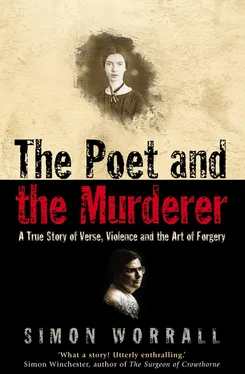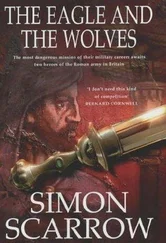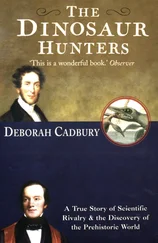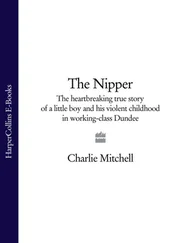Lombardo also wanted to present to the public as much information as he could about the poem’s provenance. In the historical documents world the chain of transactions known as provenance is the gold standard of authenticity. But provenance is much more than a simple list of commercial transactions. It is the story of a document or a book’s journey across time, and the people whose lives it has touched.
To find out as much as he could about the poem’s provenance, Lombardo called Marsha Malinowski, one of the two Sotheby’s employees who had handled the sale. Malinowski was a senior expert in the Department of Books and Manuscripts, and vice president of Sotheby’s. She was charming. She told Lombardo how delighted she was that the poem was going back to Amherst and that she would be happy to try and find out who had consigned it for auction. But for the moment all she could say was that it had come from a collector, who had got it from a dealer in the Midwest. Who had died.
Three days later Lombardo was sitting at his desk in the Jones Library when the phone rang. It was a long-distance call from Provo, Utah. The man at the other end of the line introduced himself as Brent Ashworth. He said that he was an attorney and that, in his spare time, he was a keen collector of historical documents. Ashworth also mentioned that he was the chairman of the Utah branch of the Emily Dickinson Society.
Lombardo assumed that he was calling to congratulate him on the purchase of the poem. People had been calling or e-mailing for weeks. What Ashworth had to say was not, however, cheerful. One day, in Salt Lake City, in 1985, Ashworth told Lombardo, he had been offered an Emily Dickinson poem for $10,000 by a forger named Mark Hofmann. Ashworth was not one hundred percent sure that the poem was the same one that Lombardo had just bought at Sotheby’s, but he was pretty certain it was.
Ashworth told Lombardo something else: that when he’d seen the poem in the Sotheby’s catalog, he’d immediately called Selby Kiffer, the other Sotheby’s employee who had handled the sale. Ashworth had done business with Kiffer, a young, upwardly mobile manuscripts expert at Sotheby’s, for many years, and wanted to warn him of the Hofmann connection. Like Malinowski, Kiffer is a senior expert in the Department of Books and Manuscripts and a vice president (in the catalog for the June 3 sale, he was also listed as being in charge of business development). Because Kiffer had always been so zealous in reporting stolen books to the FBI, his nickname at Sotheby’s was ‘Special Agent Kiffer.’ Kiffer insisted to Ashworth that he had had the poem ‘checked out.’ When Ashworth asked who had checked it out, Kiffer mentioned Ralph Franklin, at Yale University.
Lombardo put down the phone and stared out the window. He had a hollow, empty feeling in the pit of his stomach. Mark Hofmann, he remembered, was a Salt Lake City rare documents dealer who had created a string of sensational forgeries of Mormon historical documents in the early 1980s that undermined some of the central tenets of the church’s teaching. His most famous forgery came to be known as the Salamander Letter. It purported to have been written more than a century earlier by Martin Harris, the scribe who had helped Joseph Smith, the prophet and founder of the Church of Jesus Christ of Latter-Day Saints, write the Book of Mormon from a set of golden plates Smith claimed to have found in the ground in upstate New York. According to the founding legend of the Mormon religion Smith had been led to the golden plates by an angel. Hofmann’s forgery completely undermined that legend. In it he had portrayed Smith as a money-grubbing prospector who found the plates while digging in the dirt for gold. Instead of divine intervention Hofmann’s letter had described black magic and cabalism. The Mormon Church had bought the document for $40,000 in the hope that it would never be made public.
It was well known that Hofmann had also produced a string of literary forgeries nearly always of American icons, charismatic historical figures who touched a deep chord in the national consciousness, like Abraham Lincoln, Betsy Ross, or Daniel Boone. Had Hofmann, Lombardo wondered, also created an Emily Dickinson poem?
As well as being a brilliant forger, Hofmann was a master of deceit who delighted in the mayhem caused by his lies. On the outside he was a fresh-faced, bookish man who would go unnoticed in most crowds. He dressed conservatively, usually with a white shirt, tie, and jacket. He was a knowledgeable and respected dealer and collector of rare books and historical documents. He was a happily married family man who had spent thousands of dollars assembling one of America’s finest collections of rare children’s books, including a signed first edition of Alice in Wonderland , as a patrimony for his four children. Underneath this guise of normalcy, however, was another person whom Hofmann hid from everyone, including his wife and children. When he found himself entangled in his own web of lies, he had mutated into a cold-blooded psychopath.
Lombardo still believed, and wanted to believe, that the Dickinson poem was genuine. Maybe the man who had called him from Salt Lake City was a kook and this whole thing a practical joke. Lombardo checked on Ashworth and found that far from being crazy, he was a widely respected member of Salt Lake City society, an attorney, and a serious collector of historical documents. Between 1981 and 1985 he had also bought nearly half a million dollars’ worth of rare manuscripts from Mark Hofmann. ‘I was over at Hofmann’s house all the time,’ Ashworth told Lombardo over the phone. ‘I usually went up on Wednesdays and he’d pull out something juicy he wanted to offer me. On one of those days he pulled out this Emily Dickinson.’
The poem’s agnostic sentiments had jarred with Ash-worth’s Mormon faith, and he had passed on it. Then, in the late eighties, several years after Hofmann had been sentenced to life imprisonment for murder, Ashworth had seen the Dickinson poem again. It was lavishly framed and selling for between $35,000 and $40,000, in an upscale historical-documents store in the Georgetown section of Washington, D.C. The store was called the Gallery of History, part of a Las Vegas-based chain owned by a man named Todd Axelrod.
The historical-manuscripts business was traditionally the curious obsession of a few hundred fanatics. There were big collectors, like Malcolm Forbes and Armand Hammer, who amassed collections worth millions of dollars, but for most people old parchment was about as exciting as, well, old parchment. Dealers generally went into the business because they loved history and culture. Few expected to make a killing. Todd Axelrod, the son of a publisher of books on domestic pets from Neptune City, New Jersey, took this rather tweedy cultural backwater and turned it into a multimillion-dollar, mass-market business. After making a fortune as a securities broker on Wall Street, he moved to Las Vegas and, in February 1982, opened the first of a number of boutique-style stores. Crisscrossing America by plane, Axelrod then set about trying to corner the market in historical documents. In all he spent more than $3 million assembling one of the nation’s largest private collections of Americana: a hundred thousand historic documents preserved, as Axelrod liked to boast, to Library of Congress standards. Among this treasure trove was Abraham Lincoln’s letter to Grace Bedell, the young girl who had suggested he grow a beard to help him win the presidency. The price tag was $1.25 million. Not everyone could afford an Honest Abe. So Axelrod made sure that there was something for every taste and pocketbook. There were signed photos of Elvis. Movie buffs could buy memorabilia from Gone With the Wind . For sports fans there were clip signatures from Lou Gehrig or Ty Cobb. Some of Axelrod’s inventory came from a young historical-documents dealer in Salt Lake City named Mark Hofmann.
Читать дальше












